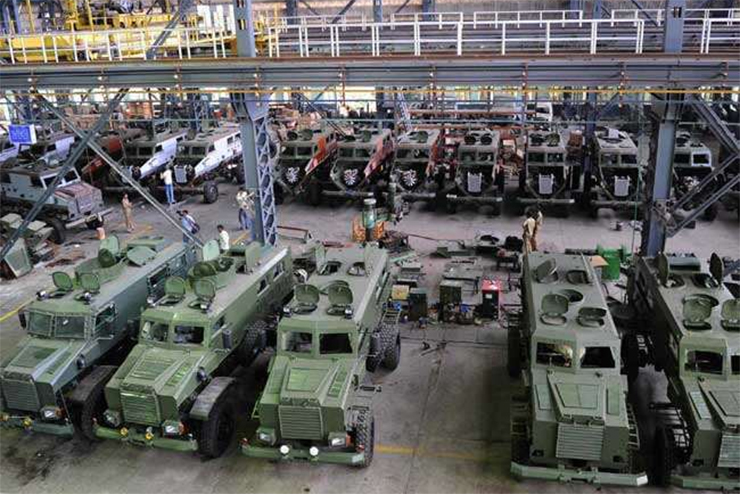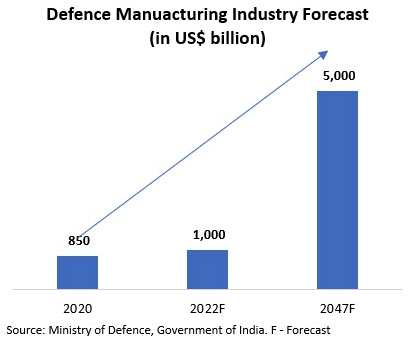
The world experienced a seismic shift during the COVID-19 pandemic, with global norms bending and nations re-evaluating their reliance on others to support their development. In the aftermath of India’s economy being hit by the pandemic, Prime Minister Narendra Modi launched the Aatmanirbhar Bharat Abhiyaan on 12th May 2020. This ambitious self-reliance and self-sufficiency initiative aims to reduce external dependence in the economic sector and foster indigenous production. As part of this movement, the concept of ‘Vocal for Local’ has been introduced to promote the purchase of domestic products, stimulating local industries and benefiting millions of indigenous sellers.
At its core, Aatmanirbhar Bharat strives to establish a robust indigenous technology-driven system that fuels the development of state-of-the-art infrastructure, leveraging India’s technological prowess and unique demographic profile for accelerated economic growth. A key focus area identified for urgent self-reliance is the defence sector. As a strategic pillar of the Indian economy, the defence industry holds immense potential for driving significant results due to the constant demand for the modernisation and upgradation of the armed forces. Achieving self-reliance in this sector would not only strengthen the economy by creating employment opportunities but also reduce the burden of imports.
Events like the Defence-Expo in Gandhinagar, Gujarat in October 2022, and the Air Expo in February 2023 in Bengaluru have highlighted the importance of this major policy initiative, particularly in the defence sector. To comprehensively assess the current state of affairs, government initiatives, and the necessary steps towards robust self-reliance, it is essential to delve into the key issues affecting India’s defence industry and understand how attaining Aatmanirbharta can significantly enhance the country’s strategic autonomy.
Generating Employment: Fostering domestic manufacturing in the defence sector has the potential to create numerous job opportunities for the youth across various emerging factories, industries, and organisations.
Reducing Dependence on Foreign Imports: A heavy reliance on defence imports weakens a nation’s negotiating power, particularly during times of crisis. India remains the world’s largest importer of military equipment, despite a slight decline in arms purchases between 2013–17 and 2018–22, as reported by the Stockholm International Peace Research Institute (SIPRI). A robust indigenisation effort will not only strengthen the design, production, and utilisation of indigenous products but also contribute to lowering India’s fiscal deficit.
Developing Dominance in Security: National security and a balanced, authoritative international political stance can only be achieved through credible indigenisation in defence. With neighbouring hostilities, porous borders, unpredictable scenarios in the Indian Ocean Region (IOR), volatile South China seas, and conflicts in European and Asian landmasses, an independent defence capability is the most credible option for India.
Utilising India’s IT Prowess: India’s IT excellence is renowned worldwide, and indigenization efforts will multiply this technological expertise, accelerate the discovery of spin-off technologies, and foster innovation for future defence platforms and systems.
Boosting the Economy: Indigenisation in defence will give rise to a large industry, including small manufacturers, software developers, and production teams. Private companies, firms, and producers can significantly contribute to the improvement of the Indian economy.
Competing with Superpowers: As India develops its defence industry with modern technologies, it can emerge as a cost-effective option for other countries, competing with existing superpowers and reducing their dominance in the sector.
Improving Global Standing: With reduced external dependency, a stronger economy, and increased competitiveness on the global stage, India will rightfully enhance its global standing.
The Challenges Ahead
Despite these commendable strides, several challenges persist in achieving complete self-reliance in India’s defence sector:
Steep Imports: India’s military heavily relies on major partners such as Russia, European nations, and the USA. Approximately 60% of its military hardware is imported from friendly foreign countries. The numbers from recent years indicate India’s heavy reliance on defence equipment imports. In 2017-18, imports were Rs 30,677 crore, which increased to Rs 40,330 crore in 2019-20 and further to Rs 43,916.37 crore in 2020-21. While it slightly receded to Rs 40,839.53 crore in 2021-22, this dependence labels India as the largest importer of defence equipment.
Dependency on Transfer of Technology (TOT): India’s involvement in licensed production or manufacturing of defence equipment based on Transfer of Technology (TOT) agreements with Original Equipment Manufacturers (OEMs)/suppliers has been a common practice. To achieve true self-reliance, India needs to reduce reliance on such arrangements and enhance its indigenous technological capabilities.
Dependency for Raw Materials: Defence equipment and systems require high-quality raw materials, parts, and spares. However, the country largely relies on voluminous imports from foreign suppliers for these critical components.
Improving Quality Control Measures: Elevating the current figure of net average 35% self-reliance in defence necessitates robust quality control measures by indigenous manufacturers. Enhanced quality will reduce the need to turn to foreign suppliers for critical equipment.
Scope of Modernisation versus Funding: Despite the need for large-scale modernisation of armed forces, the defence budget falls short. There is an urgent need to enhance the capacities and capabilities of Defence Public Sector Undertakings (DPSUs), ordinance factories (OFs), and research organisations such as the Defence Research and Development Organization (DRDO).
Underperformance of DPSUs/OFs: The performance of DPSUs and OFs has been considerably low, affected by gaps in quality delivery, capacity, capabilities, obsolete infrastructures, technologies, and work culture.
Lower FDI Inflows: Cumbersome paperwork and procedures, coupled with lesser focus, have resulted in continuous low Foreign Direct Investments (FDIs) in the defence sector.
Recent Developments
With efforts of the Government, the following noteworthy developments have taken place in India’s defence sector:
- India has put out a range of its own military hardware on sale, including missile systems, Light Combat Aircraft (LCA), helicopters, warships, patrol vessels, artillery guns, tanks, radars, and more.
- India’s defence exports have reached an unprecedented peak, skyrocketing from Rs 686 crore in FY 2013-14 to an estimated Rs 16,000 crore in FY 2022-23, representing a remarkable twenty-three-fold increase. India’s defence industry has demonstrated its prowess in design and development by exporting to more than 85 countries, with a staggering 100 firms currently engaged in defence product exports.
- Commissioning of modern aircraft carrier INS Vikrant (with over 70% indigenous equipment), test firings of indigenous SLBMs (submarine-launched ballistic missiles), and the induction of made-in-India ships like INS Prachand LCH, Scorpene submarines, survey ship ‘Sanshodhak’ etc. all showcase our growing shipbuilding prowess.
- India’s Defence Production has recorded a 12% growth In FY 2022-23, the highest till now, and surpassed the Rs 1 lakh crore mark.
- The Startup Incubation and Innovation Centre (SIIC) at IIT Kanpur signed an MoU with Defence Innovation Organisation (DIO) to nurture and support start-ups and SMEs in the defence sector through its flagship program iDEX Prime.
- India has set aside 68% of the military’s capital acquisition budget for making indigenous purchases in 2022-23 (64% in 2021-22, and 58% in 2020-21). A total of ₹1 lakh crore has been set aside for domestic procurements this year, compared to ₹84,598 crore, ₹70,221 crore, and ₹51,000 crore in the three previous years. Also, approximately $4.3 billion worth of offset contracts have been signed and launched in the last 15 years.
Noteworthy Government Initiatives
To propel defence production and achieve self-reliance, the government has undertaken several strategic initiatives:
Licensing Relaxation: The government has simplified defence industrial licensing, introduced relaxation in export controls, and granted NOCs with longer validity periods, facilitating domestic defence manufacturing.
Public Procurement Order 2017: The implementation of the Public Procurement Order emphasises preference for domestically manufactured defence products, fostering the “Make in India” initiative.
SRIJAN Portal: The introduction of the SRIJAN portal facilitates indigenisation efforts by connecting Indian defence industry players, including Micro, Small, and Medium Enterprises C.
Reforms in Offset Policy: The government has revised the offset policy, with a focus on attracting investments and technology through higher multipliers.
Increase in FDI and Encouraging Technology Transfer: To attract foreign investment, the FDI limit has been relaxed to 74% under the automatic route, enabling foreign companies to set up manufacturing units with higher ownership and control. Post seeking government approval, 100% FDI is allowed.
Lines of Credit: Specific incentives have been introduced by the Ministry of External Affairs, facilitating Lines of Credit for countries to import defence products within policy guidelines.
Draft Defence Production & Export Promotion Policy 2020: The introduction of this policy aims to promote ease of doing business, integrate MSMEs and startups into the defence supply chain, and foster growth in the sector. To boost indigenous manufacturing, the government has published “positive indigenisation lists” consisting of 3268 items that can no longer be imported. This move aims to encourage domestic production and reduce reliance on foreign suppliers. Additionally, a percentage of the Capital outlay of the defence budget has been reserved for procurement from domestic industries, further promoting indigenous production.
The establishment of two dedicated defence corridors in Tamil Nadu and Uttar Pradesh will act as clusters of defence manufacturing, facilitating collaboration and growth in the sector. Identifying the defence and aerospace sector as a focus area for Aatmanirbhar Bharat, the government is planning to achieve a turnover of $25 billion, including an export value of $5 billion in aerospace and defence goods and services by 2025.

The Way Forward
To achieve complete self-reliance in the defence sector, certain crucial steps need to be taken:
Encouraging Youth to Turn Entrepreneurs: India’s vast working-age population, with an average age of 27, presents a tremendous opportunity for harnessing entrepreneurial talent in the defence sector.
Investing Heavily in R&D: India’s research and development expenditure-GDP ratio of 0.7% is relatively low compared to major economies. The government can offer incentives to corporates investing in R&D to foster technological advancements in the defence industry.
Looking Beyond DRDO for R&D: Creating an agency similar to the USA’s Defense Advanced Research Projects Agency (DARPA) and an Office of the Chief Scientist (OCS) can help identify talent and ideas from diverse sources, driving innovation and technological entrepreneurship.
Reform/Revamp DPSUs and OFs: Ensuring transparency and enhanced corporate governance by listing all unlisted DPSUs on stock exchanges and corporatising OFs can lead to better accountability and functioning.
Create a Defence Tech University: Establishing a dedicated university for defence studies will nurture skilled and oriented young minds, fulfilling the growing demand for a skilled workforce in the aerospace industry.
Compress Timelines and Focus on Core Technologies: In the fast-changing technology landscape, it is crucial to compress timelines and focus on core technologies to stay competitive.
Foster Collaboration and Public-Private Partnership: A collaborative approach, enhanced manufacturing capabilities, and public-private partnerships will drive growth and innovation in the defence sector.
Mitigate Risks and Encourage Investment: Mitigating risks for the industry and encouraging government and venture capitalist investments will attract more capital into defence manufacturing, promoting Aatmanirbharta in the sector.
Final Thoughts
The economic crisis triggered by the Covid-19 pandemic has accelerated India’s path towards self-reliance in the defence sector. Embracing Aatmanirbharta is not only strengthening national security but also presenting growth opportunities for the youth and businesses engaged in defence manufacturing and related services. Despite these commendable strides, several challenges persist in achieving complete self-reliance in the defence sector: By addressing these challenges, building on recent successes, fostering innovation, promoting R&D, and embracing new initiatives, India can emerge as a formidable military power and a credible strategic player on the global stage.
-The writer is a former Indian Navy Submarine Officer with extensive experience and expertise in defence and strategic affairs. He has served on Kilo Class Submarines, commanded INS Sindhurakshak, and excelled in underwater weapons & missile specialisation. He can be reached at sumit12in@gmail.com. The views expressed are personal and do not necessarily reflect the views of Raksha Anirveda.















